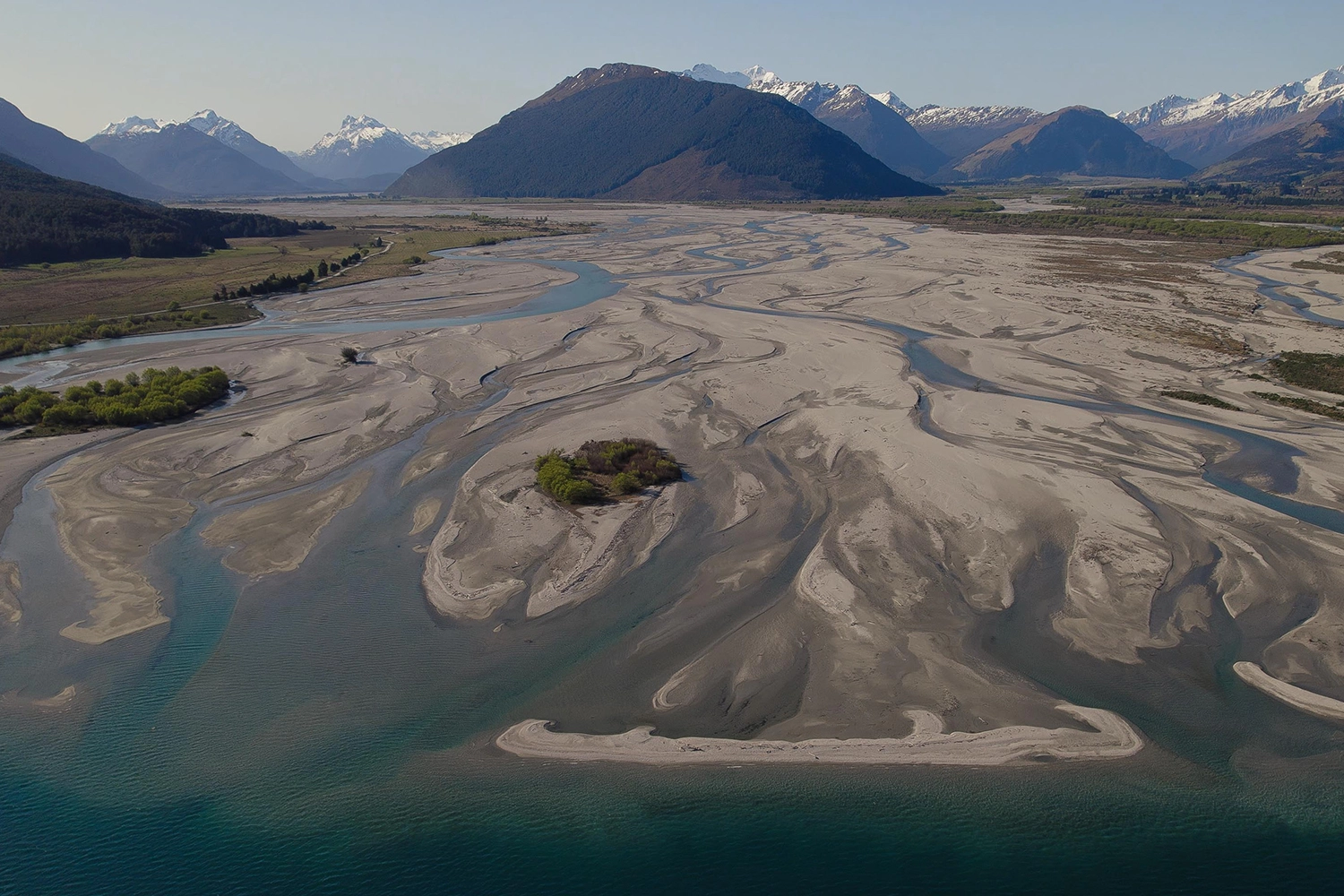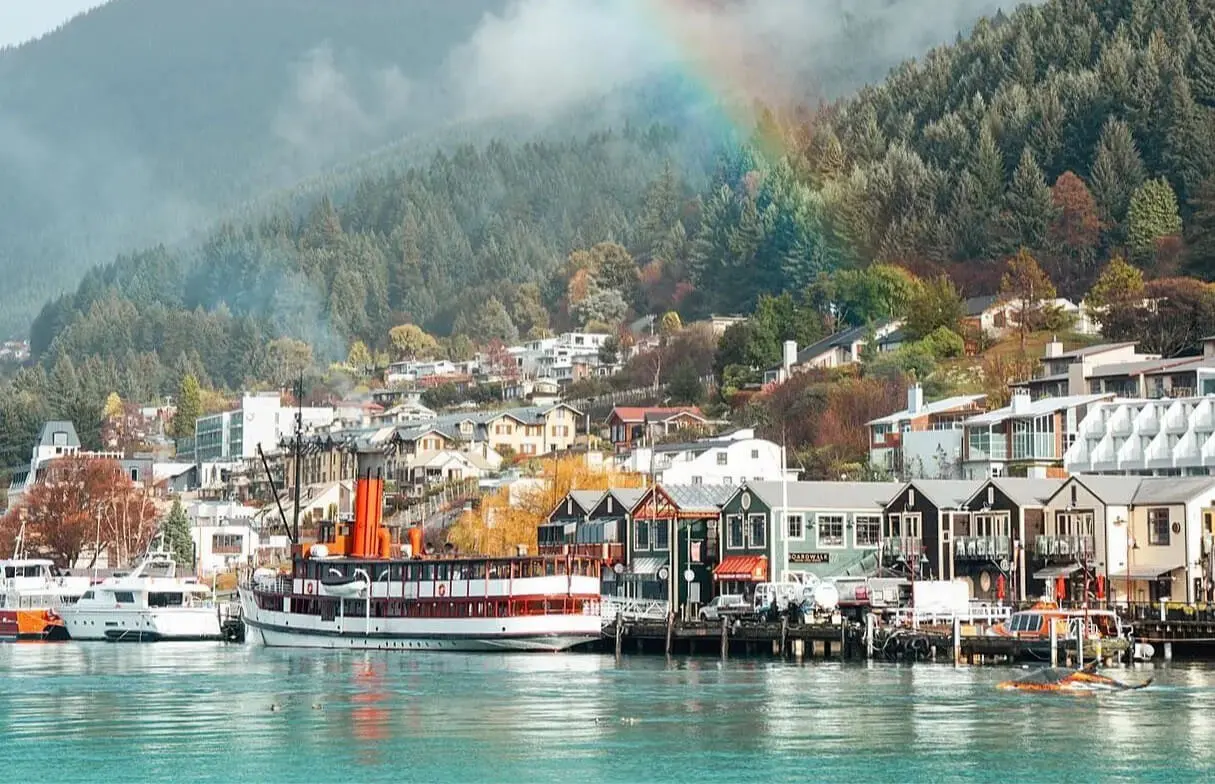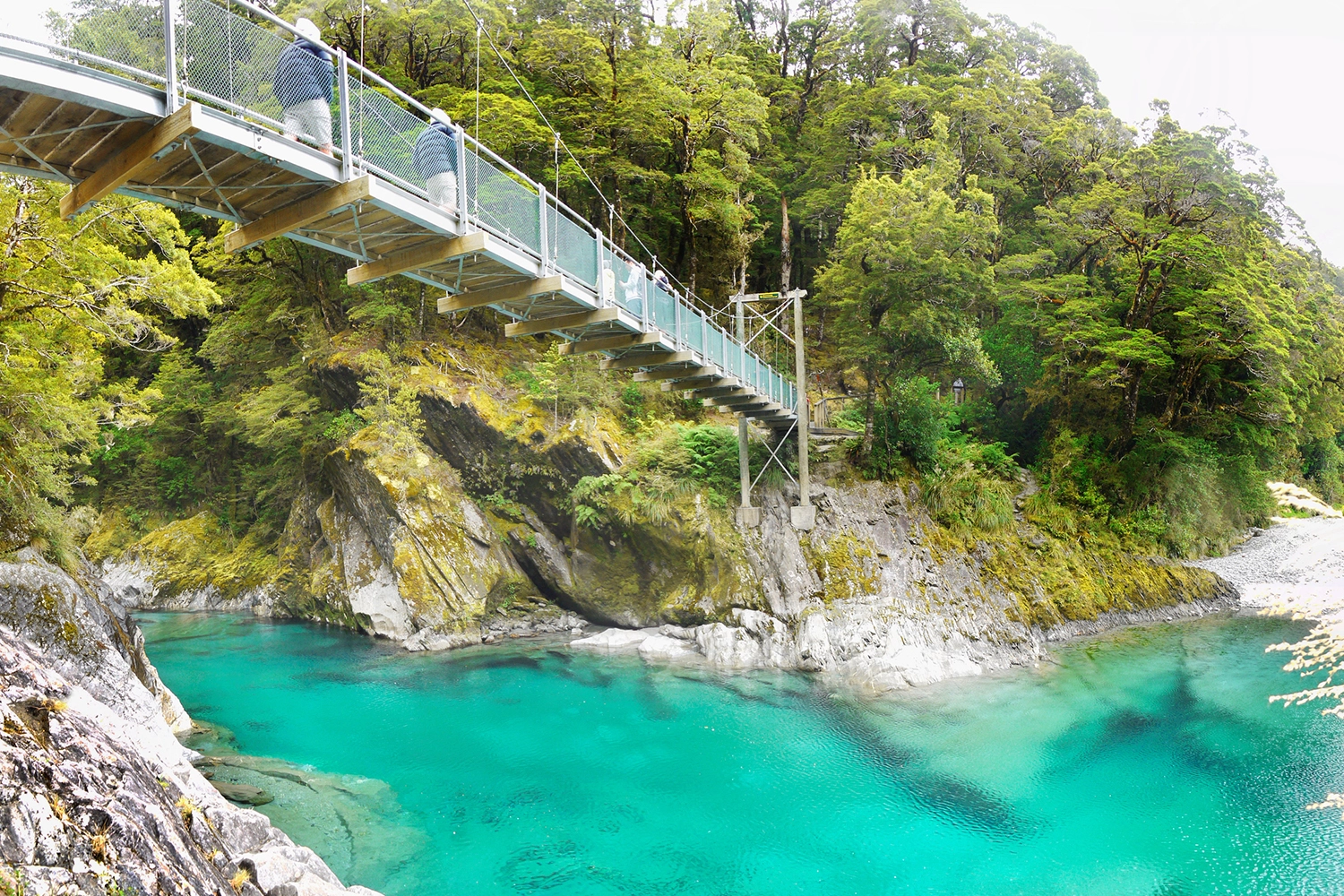The Location
The Otago Region,
New Zealand
Lodge Lorien is located in the Otago Region, a region of New Zealand located in the southern half of the South Island. It has an area of approximately 32,000 square kilometres. The name “Otago” is the local southern Māori dialect pronunciation of “Ōtākou”, the name of the Māori village near the entrance to Otago Harbour.
Lodge Lorien is located 5 minutes from the Otago town of Glenorchy and 45 minutes drive or less than 10 minutes by helicopter from Queenstown International Airport. The Lodge is located on a 2.7ha parcel of land in Wyuna Preserve overlooking Lake Whakatipu and the breathtaking surrounding mountains.
Nearby Towns
Glenorchy
The closest town to Lodge Lorien, Glenorchy is a true outdoor enthusiast’s paradise.The dramatic scenery of the Glenorchy’s surrounds are nothing short of awe-inspiring. Lake Whakatipu and the Dart River offer opportunities for jet boating and kayaking, and some of New Zealand’s best hiking trails can be accessed from here. Horse trekking in the area is also highly recommended.

Glenorchy’s spectacular landscapes have become a prime location for film scouts, depicting many scenes from The Lord of the Rings trilogy as well as featuring in the Narnia movies. Twenty kilometres away from Glenorchy, as bucolic farmland gives way to beech forests, lies Paradise. Some say it was christened for its natural charms, others for the paradise ducks that live in the area.

Home to about 500 people, Glenorchy is a welcoming and vibrant place famous for its southern kiwi hospitality. There’s an assortment of accommodation, cafes, restaurants and bars. (newzealand.com)
The snow clad peaks of the Barrier Mountain Range to the north are dominated by a towering Mount Earnslaw / Pikirakatahi (2830m), while forested beech slopes, braided rivers and crystal clear mountain streams flowing from numerous valleys into Lake Wakatipu provide a breathtaking backdrop that is first revealed to visitors as they round Bennetts Bluff on the Glenorchy Queenstown road and get their first sight of the Head of the Lake.
Since the earliest times, this area has captured the imaginations and hearts of both settlers and travellers alike. Today, the magic of Glenorchy continues to lure – always the natural beauty here accentuates the need for people to linger, contemplate, or to be inspired by both its subtleness and boldness. (glenorchycommunity.nz)
Arrowtown
Arrowtown is a historic gold mining town near Queenstown, rich in heritage and natural beauty. Nestled by the Arrow River in a wooded valley among mountain peaks, Arrowtown is a charming legacy of the 1860s Otago gold rush. Stroll up the main street lined with historic miners’ cottages, explore local boutiques, discover the history, and enjoy Arrowtown’s sophisticated food scene.
The Culture
The Geography
Beginning in the west, the geography of Otago consists of high alpine mountains. The highest peak in Otago is Mount Aspiring / Tititea, which is on the Main Divide. From the high mountains the rivers discharge into large glacial lakes. In this part of Otago, glacial activity – both recent and very old – dominates the landscape, with large ‘U’ shaped valleys and rivers which have high sediment loads. River flows also vary dramatically, with large flood flows occurring after heavy rain. Lakes Whakatipu, Wānaka, and Hāwea form the sources of the Clutha / Matau-au, the largest river (by discharge) in New Zealand
Source: (wikipedia)
Lake Whakitipu
Lodge Lorien overlooks the breathtakingly beautiful Lake Whakitipu.
Lake Whakitipu is the third largest lake in New Zealand. Lake Whakatipu fills a deep valley carved into the mountains by ancient glaciers.
The Dart and Rees Rivers flow into the northern end of Lake Whakatipu; the Kawarau River, beginning near Queenstown, handles its outflow.
The lake occupies a single, glacier-carved trench and is bordered on all sides by tall mountains, the highest of which is Mount Earnslaw (2819 metres). Settlements around the lake shore include Queenstown and the villages of Kingston, Glenorchy and Kinloch.
Because of its unusual shape, Lake Wakatipu has a ‘tide’ (more correctly, an unusually large seiche or “standing wave”), which causes the water to rise and fall about 10 centimetres every 25 minutes or so. Maori legend links this phenomenon to the heartbeat of a huge monster named Matau, who is said to be slumbering at the bottom of the lake.
Source: newzealand.com
The Humboldt Mountains
The Humboldt Mountains or Humboldt Range are one of the many ranges which make up the Southern Alps in the South Island of New Zealand. They lie to the northwest of Lake Whakatipu in the Otago Region. Parts of the range lie within Fiordland National Park, and they form the southern extremity of Mount Aspiring National Park.
The range was named by early explorer James McKerrow, and like many geographic features worldwide, it was named in honour of notable scientist Alexander von Humboldt.
Alexander was most known for his work in the field of Biogeography and in 1800, and again in 1831, he described scientifically, on the basis of observations generated during his travels, the local impacts of development causing human-induced climate change.
Mount Bonpland – credit: Southern Alps Photography
Several peaks within the Humboldt Mountains rise to over 2,000 metres above sea level, the highest peak being Mount Bonpland, at 2,348 metres
The Humboldt Mountains are a dramatic and beautiful range that can be seen to the North West of the property across Lake Whakatipu.
Greenstone Valley
This verdant U-shaped valley was created by one arm of the huge Te Puoho/Hollyfield Glacier and can be seen from Lodge Lorien on the Western shores of Lake Whakatipu. It is made up of the open tussock country above the treeline – the natural upper limit of the trees. The distinctive sharp boundary line of the dark green forest can easily be seen in the distance.
Ari/Mount Alfred
Ari/Mount Alfred is a 1,375m high hill at the Northern end of Lake Whakatipu that was formed by glaciers during the last ice age.
It is the prominent hill due north from Glenorchy located between the Dart River / Te Awa Whakatipu and Rees River and affords breathtaking 360 degree views of Lake Whakatipu and the Dart and Rees River Valleys.
Source: wikipedia
Mount Larkins
Mount Larkins is a 2,300m high mountain to the East of Lodge Lorien. It is part of the Whakaari Conservation Area. Whakaari Conservation Area came under the auspices of the Department of Conservation in 2008, which opened up about 9000ha of rugged land to the public on foot, cycle and horseback.
Whakaari (meaning “To hold up to view”) is found between Glenorchy and Mt Aurum and boasts two major walking tracks – Mt Judah and McIntosh loops which offer amazing views of the Humboldts, Dart Valley and Mt Earnslaw. It’s alpine, tussock and grassland terrain and the bottoms of valleys still have beech forest. It was a very important area for the mineral, scheelite, from the 1880s.
Source: mountainhut.nz
Mount Aspiring National Park
Named for Mt Aspiring, one of New Zealand’s highest peaks, this park is a dreamland of mountains, glaciers, river valleys and alpine lakes. In the past, Maori trekked through the region on their way to the pounamu (greenstone) fields of the west coast; Europeans visited to map, name and explore geographical features of the area; settlers attempted to farm and mine some of the valleys – the relics have blended into the stunning scenery.
In straddling the ‘great divide’ of the Southern Alps, the Mount Aspiring National Park presents a breath-taking range of landscapes.
At its heart is a massive area of wilderness – glaciers, snowfields, mountains, valleys and wildlife habitats that require days of hiking to reach. To the west of the divide, where rainfall is plentiful, the beech forest comes with a sound track of birdsong and waterfalls.
Deep in the glacier-gouged valleys of the east, grassy river flats are hemmed by imposing mountains. And above the tree line, subalpine gardens of tussock, lichens and dainty flowering herbs survive against all odds.
Rock forms are an unforgettable feature of the park. From the curiously coloured slopes of the Red Hills to the brittle grey schist of the Alps, ice ages and huge tectonic upheavals have created beauty with a hard edge.
Source: new zealand.com
The Dart River
The Dart River / Te Awa Whakatipu flows through rugged forested country in the southwestern South Island of New Zealand. Partly in Mount Aspiring National Park, it flows south-west and then south for 60 kilometres (37 mi) from its headwaters in the Southern Alps and the Dart Glacier, eventually flowing into the northern end of Lake Whakatipu near Glenorchy. The river mouth can be seen to the North of Lodge Lorien.
Source: wikipedia
Flora & Fauna
Glenorchy has a range of native wildlife and indigenous birds, insects, animals and plants, many of which are not found anywhere else in the world.
In 1990 the Westland and Mount Cook National Park, Fiordland National Park including Milford Sound and Doubtful Sound, and Mt Aspiring National Park from the Humboldt’s to the Haast River, was awarded World Heritage Status for its outstanding universal value as a site of natural and cultural heritage and was named Te Wahipounamu – South West New Zealand.
Te Wahipounamu (The Place of the Greenstone) has been carved and shaped by years of glaciations, receding to show the most amazing fjords, rocky coasts, towering cliffs, lakes and waterfalls.
Two-thirds of the park is covered with southern beech and podocarps, some of which are over 800 years old. Large leaved Red Beech trees are found on the warm rich alluvial valley floors, while mountain and silver beech dominate higher up in the valley’s.
Kea, the only alpine parrot in the world, lives in the National Parks, as does the rare and endangered takahe, a large flightless bird. Kiwi and native bats have been reported in the Caples and Greenstone Valley’s, but there have been no recent confirmed sightings.
The Dart Valley has a sizeable populations of the endangered mohua, or yellowhead birds and the presence of long-tailed bats. Other forest birds such as kakariki or parakeet, robin, tomtit, fantail and brown creeper thrive in the area. Whio (or blue duck) are found in fast flowing streams and rivers in the valleys, and the noisy paradise ducks are conspicuous inhabitants of the river flats.
Remnants of the giant Moa bird have been found in both the Rees and the Routeburn Valley’s . These huge flightless birds stood approximately 3 metres tall and weighed about 250 kilograms. It is estimated that there were about 11 different species of Moa around New Zealand but all have been extinct for several hundred of years.
Source: glenorchyinfocentre.nz
Getting There
Lodge Lorien is located near the town of Glenorchy which is at the Northern end of Lake Whakatipu and only a 45 minute drive from Queenstown and Queenstown International Airport or a short helicopter ride from the Airport to Lodge Lorien’s private helipad.
Queenstown International Airport receives daily direct flights from Auckland, Wellington and Christchurch, and great road access on major New Zealand highways makes driving to the region an easy and beautiful experience.
Queenstown is located in the southwest corner of the South Island of New Zealand and is very accessible with multiple daily direct flights from all New Zealand’s main centres. Direct scheduled services from Sydney, Brisbane, Melbourne and Gold Coast in Australia are also available.
Flying from America
From the West Coast
Los Angeles – one stop flights are available from Los Angeles via Sydney Australia and then directly into Queenstown. Two stop flights are available via Sydney & Auckland into Queenstown.
From the East Coast
New York – two stop flights are available via Los Angeles and Sydney directly to Queenstown or Dallas and Auckland to Queenstown.
Flying from Asia
Hong Kong/Singapore/Jakarta – one stop flights via Sydney, Australia go directly into Queenstown.
Shanghai/Beijing – 2 stop flights go via Hong Kong and Sydney into Queenstown
Tokyo – one stop flights are available via Auckland or Sydney into Queenstown.
Kuala Lumpur/New Delhi – two stop flights are available via Singapore & Australia into Queenstown.
Flying from Europe
London/Paris/Munich to Queenstown – two stop flights are available via Singapore or Dubai & Australia; alternate routes go via the San Francisco and direct into New Zealand via Auckland to Queenstown.
Flying from Australia
Direct flights to Queenstown are available from Melbourne/Sydney/Brisbane/Adelaide.
All other capital cities have one stop flights available to Queenstown.





































